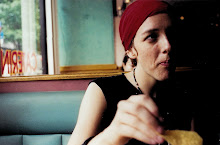Today is August 10th, a national holiday in Ecuador. Like most holidays celebrated here, the commemoration of it, since it falls on a Tuesday, will be celebrated on Friday as part of a long weekend. Wealthy Quiteños head to the beach while the sex workers hope that business will pick up. Rather than analyzing the situation on the streets, I want to review this historical date—I’ve been reading a lot about Quito’s history as background information for my research.
According to historians, Ecuador’s struggle for independence began on August 10, 1809 and finished in 1830 when it separated from Grand Colombia, the large republic created by Simon Bolivar upon the region’s independence from Spain. August 10, 1809 marks the very first uprising and preliminary cries for independence in Ecuador. A new “independent” government, “Una Junta” lasted until October of 1809 but due to lack of public and regional support outside of Quito, it quickly dissolved. Despite only lasting a couple months, this was the first independent government in Latin America and although he is not recognized as such, Ruiz de Castilla, was technically Ecuador’s first President. At this time, Ecuador as a country hadn’t formed as a complete whole. The coastal city Guayaquil, a thriving port, and Cuenca, another large city in the sierra highlands, did not yet consider themselves part of the same region as Quito. Instead, at this time, they expressed more affinity to the cosmopolitan center of Lima, in contemporary Peru.
After Royalist (Spanish) troops from Lima occupied Quito once again, it became a city under siege and all of the early revolutionaries involved in the battle of August 10, 1809 were given death sentences, tortured, and placed in prison indefinitely. Once the Spaniards invaded Quito, the public began to support revolutionary efforts. No longer a theoretical idea limited to elite intellectuals, local Quiteños began to yearn for independence as well as they began to experience oppression from the monarchy. For example, most families in Quito had loved ones in jail, (many times randomly) had property destroyed, or acts of cruel violence committed against them. If they weren’t already against the monarchy, historians note that this occupation after the fail of the August 10 uprising, converted the masses in a fellow sweep, setting the stage for the next battle of independence.
Another event that firmly planted the seeds of independence in Quito’s public, was the massacre of August 2, 1810, when a group of revolutionaries broke into the city’s jails to free the political prisoners from the previous year’s uprising (the original battle of August 10, 1809). Although some prisoners went free, it provoked a bloody massacre in which the monarchy’s army turned against the masses protesting in the streets. The exact number of people killed is not known, but it is thought between 150-300. In the months after this event, the yearning for independence reached new levels—Simon Bolivar proclaimed that, “The massacre of Quito marks the start of this war that we will fight ‘til the death, until we obtain independence.” The “blood of Quito” became a powerful symbol during the struggles of independence throughout the entire region.
Important for my research is the role that San Marcos, the neighborhood where I work with the sex workers, played in Ecuador’s long struggle for independence. San Marcos was founded at the end of the 17th century and has always been characterized as a solidly middle class area where artisans, who still work and live in the neighborhood today, have honed their crafts over the centuries. Due to its isolated geography—it developed between two deep ravines, which were finally filled at the end of the 18th century—San Marcos is one of the historic center’s best preserved neighborhoods. Only one street enters the neighborhood, Junín, which ends in a large cul-de-sac, so there’s no through traffic and no one passes through the neighborhood to get to somewhere else. The sex workers of today work along its peripheral street, Montúfar, which is perpendicular to Junín.
Another characteristic of San Marcos is that it has always been known as an intellectual neighborhood and indeed, some of the most important thinkers of Independence resided within its streets. The clergy member, Miguel Antonio Rodríguez Mañosca, who is considered one of the fundamental visionaries and masterminds behind Ecuador’s independence, lived his entire life in San Marcos. Due to his active involvement in the struggle for independence, he was condemned to death in 1813. He was able to escape his sentence by choosing to be exiled to the Philippines. Francisco Javier Ascásubi was another revolutionary from San Marcos who had signed the “First Cry of Independence” Acts of August 10, 1809. He was killed in the massacres of August 2, 1810 and was buried in the Church of San Francisco, the first church established in Quito during the colonial period. Among others who participated in the August 10th, 1809 uprising or who were considered some of Ecuador’s most important intellectuals who resided in San Marcos were Juan Barreto, Juan Pablo Arenas, Javier Espinoso, Manuel Ascásubi Matheu, and Carlos Andrade Marín.
Despite the fact that the connection between these revolutionaries and today’s demographic of San Marcos, including the sex workers and robbers of the area, is tenuous at best, perhaps there’s something to be said that neighborhood has a history of attracting some of Quito’s most “rebellious” citizens. In any case, it’s good to review the significance of August 10th and to take into account San Marcos’s early prominent residents. At the very least, it's important to note that the neighborhood continues to attract artists and intellectuals as residents. (The sex workers of San Marcos do not also reside in the neighborhood—they live in other parts of the historic center or in South Quito).
Friday, August 20, 2010
Subscribe to:
Post Comments (Atom)

No comments:
Post a Comment